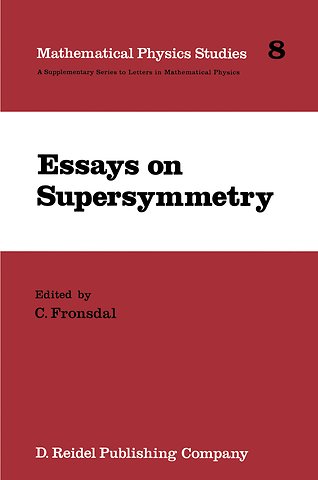Essays on Supersymmetry
Samenvatting
to our own also needs to be understood. Such unification may also require that the supersymmetry group possess irreducible representations with infinite reductiori on the Poincare subgroup, to accommodate an infinite set of particles. Such possibilities were 5 envisaged long ago and have recently reappeared in Kaluza-Klein . 6 d' . th 7 S . l' th supergraVlty an m superstnng eory. upersymmetry Imp Ies at forces that are mediated by bose exchange must be complemented by forces that are due to the exchange of fermions. The masslessness of neutrinos is suggestive-we continue to favor the idea that neutrinos are fundamental to weak interactions, that they will finally play a more central role than the bit part assigned to them in Weinberg-Salam theory. There seems to be little room for doubting that supersymmetry is badly broken-so where should one be looking for the first tangible manifestations of it? It is remarkable that the successes that can be legitimately claimed for supersymmetry are all in the domain of massless particles and fields. Supergravity is not renormalizable, but it is an improvement (in this respect) over ordinary quantum gravity. Finite super Yang-Mills theories are not yet established, but there is now a strong concensus that they soon will be. In both cases massless fields are involved in an essential way.

